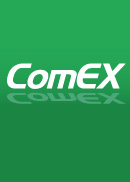11 巻, 8 号
選択された号の論文の17件中1~17を表示しています
- |<
- <
- 1
- >
- >|
Special Cluster on Emerging Communication Technologies in Conjunction with Main Topics of ICETC2021
-
Special Cluster on Advanced Communication Technologies in Conjunction with Main Topics of ICETC 2021原稿種別: FOREWORD
2022 年11 巻8 号 p. 461
発行日: 2022/08/01
公開日: 2022/08/01
PDF形式でダウンロード (23K) -
原稿種別: LETTER
専門分野: Wireless Communication Technologies
2022 年11 巻8 号 p. 462-467
発行日: 2022/08/01
公開日: 2022/08/01
[早期公開] 公開日: 2022/01/27PDF形式でダウンロード (2081K) -
原稿種別: LETTER
専門分野: Network System
2022 年11 巻8 号 p. 468-473
発行日: 2022/08/01
公開日: 2022/08/01
[早期公開] 公開日: 2022/02/04PDF形式でダウンロード (742K) -
原稿種別: LETTER
専門分野: Wireless Communication Technologies
2022 年11 巻8 号 p. 474-479
発行日: 2022/08/01
公開日: 2022/08/01
[早期公開] 公開日: 2022/03/07PDF形式でダウンロード (230K) -
原稿種別: LETTER
専門分野: Fundamental Theories for Communications
2022 年11 巻8 号 p. 480-484
発行日: 2022/08/01
公開日: 2022/08/01
[早期公開] 公開日: 2022/03/07PDF形式でダウンロード (689K) -
原稿種別: LETTER
専門分野: Wireless Communication Technologies
2022 年11 巻8 号 p. 485-490
発行日: 2022/08/01
公開日: 2022/08/01
[早期公開] 公開日: 2022/03/09PDF形式でダウンロード (197K) -
原稿種別: LETTER
専門分野: Navigation, Guidance and Control Systems
2022 年11 巻8 号 p. 491-496
発行日: 2022/08/01
公開日: 2022/08/01
[早期公開] 公開日: 2022/03/09PDF形式でダウンロード (636K) -
原稿種別: LETTER
専門分野: Wireless Communication Technologies
2022 年11 巻8 号 p. 497-502
発行日: 2022/08/01
公開日: 2022/08/01
[早期公開] 公開日: 2022/03/16PDF形式でダウンロード (1438K) -
原稿種別: LETTER
専門分野: Internet
2022 年11 巻8 号 p. 503-508
発行日: 2022/08/01
公開日: 2022/08/01
[早期公開] 公開日: 2022/03/17PDF形式でダウンロード (872K) -
原稿種別: LETTER
専門分野: Network System
2022 年11 巻8 号 p. 509-514
発行日: 2022/08/01
公開日: 2022/08/01
[早期公開] 公開日: 2022/03/17PDF形式でダウンロード (323K) -
原稿種別: LETTER
専門分野: Navigation, Guidance and Control Systems
2022 年11 巻8 号 p. 515-520
発行日: 2022/08/01
公開日: 2022/08/01
[早期公開] 公開日: 2022/03/17PDF形式でダウンロード (531K) -
原稿種別: LETTER
専門分野: Network
2022 年11 巻8 号 p. 521-526
発行日: 2022/08/01
公開日: 2022/08/01
[早期公開] 公開日: 2022/03/22PDF形式でダウンロード (1103K) -
原稿種別: LETTER
専門分野: Navigation, Guidance and Control Systems
2022 年11 巻8 号 p. 527-531
発行日: 2022/08/01
公開日: 2022/08/01
[早期公開] 公開日: 2022/04/07PDF形式でダウンロード (1029K)
Regular Section
-
原稿種別: LETTER
専門分野: Navigation, Guidance and Control Systems
2022 年11 巻8 号 p. 532-537
発行日: 2022/08/01
公開日: 2022/08/01
[早期公開] 公開日: 2022/05/18PDF形式でダウンロード (504K) -
原稿種別: LETTER
専門分野: Wireless Communication Technologies
2022 年11 巻8 号 p. 538-542
発行日: 2022/08/01
公開日: 2022/08/01
[早期公開] 公開日: 2022/05/23PDF形式でダウンロード (408K) -
原稿種別: LETTER
専門分野: Network
2022 年11 巻8 号 p. 543-547
発行日: 2022/08/01
公開日: 2022/08/01
[早期公開] 公開日: 2022/05/30PDF形式でダウンロード (322K) -
原稿種別: LETTER
専門分野: Transmission Systems and Transmission Equipment for Communications
2022 年11 巻8 号 p. 548-554
発行日: 2022/08/01
公開日: 2022/08/01
[早期公開] 公開日: 2022/05/30PDF形式でダウンロード (371K)
- |<
- <
- 1
- >
- >|
